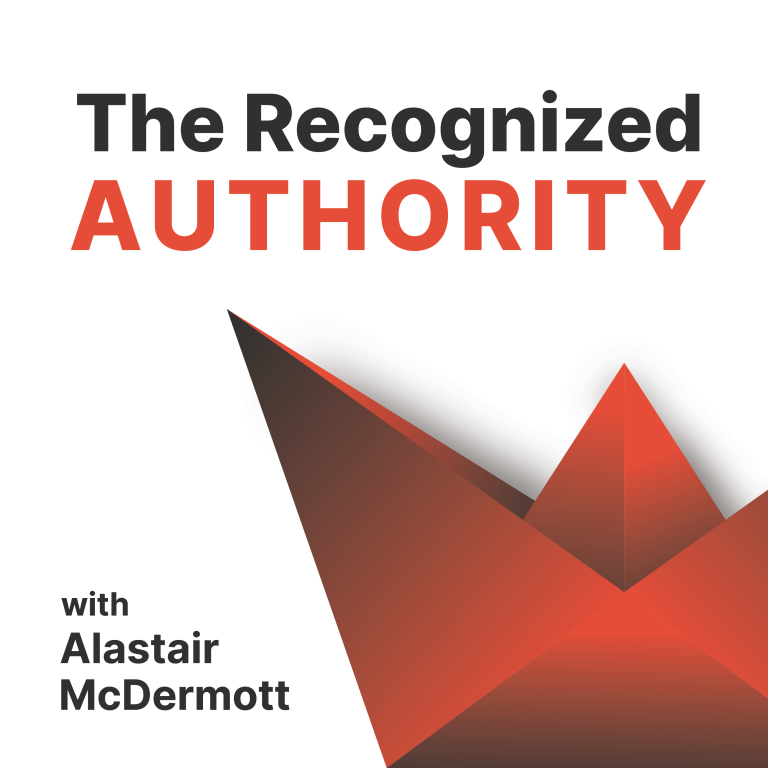Now that you’ve got some educational or thought-leadership type content planned, the next step is to get it in front of your target audience.
Have a Profile Everywhere
I recommend that you have a business profile on all of the major networks that looks professional and contains your positioning statement and call to action.
Cover all the major networks:
- YouTube
Focus on One
However, I’m a big fan of Joe Pulizzi of the Content Marketing Institute and I take his recommendation on this:
“In the beginning, it’s important to focus on creating amazing and relevant content with mostly one content channel (podcast, video, blog, etc.).”
“Over the long term, you’ll be distributing your content through a number of channels, but right now you need to make a decision about the “core” channel.”
– Joe Pulizzi in “Content Inc.”
Patrick McGilvray at The Brand Sketch and the Going Solopreneur podcast is another Joe Puluzzi fan. He writes:
Why you should focus on one marketing channel at a time:
- You get to focus on your passion and your strength.
- You will get really good at your core channel.
- You will build your audience faster.
- You will outperform your competition.
- You will reach your goals sooner.
Where is your audience active online?
It’s usually pretty easy to identify the correct channel – for most consulting firms the ideal client will be another business, and so a B2B channel like LinkedIn is where to focus. In some industries, more general social networks like Facebook will be right, and for others it will be niche channels like Pinterest.
Where is your audience active offline?
Are there associations or professional organisations to which your audience are members? Can you join as an Associate member?
What conferences and events do they attend? Can you attend their conferences as a delegate, exhibitor or even as a speaker?
Mark O’Brien of Newfangled writes about how he found attending conferences as an attendee was almost as valuable as speaking:
Ideally, yes, you’d be the expert on the stage giving the premier keynote to an audience of adoring fans. That’s an excellent and, for many of you, achievable goal. But today, for many firms, that’s a reach. In my experience, you will get at least 80% (if not more) of the value from an event just by being there. I’m also not talking about having a booth, or even sponsoring. I’m talking about just being there, in a very active, present, but decidedly attendee-based way, and interacting with your prospects in as helpful, empathetic, and––at all costs––not at all sales-y way.
I want to be clear that this is, in no way, a case for not speaking at events. I want you to do that as much as ever. My intent here, though, is to convince you that simply attending could potentially be just as powerful. Over the past 12 years, Chris Butler, Lauren McGaha, and I have given many dozens of talks on big and small stages all over North America. We’ve also attended about the same number of events as ‘normal’ attendees. I’m not sure which we’ve ultimately gotten more business from, but I do know that the numbers are very, very close. I wonder if that surprises you as much as it surprised me when I figured it out.
Mark has some more great insight in that article including:
When a principal tells me about their firm’s positioning, one of the first things I think about is whether or not their target audience congregates. I see this as one of the dividing lines in a firm’s ability to successfully market themselves.
There’s so much insight in that article that I run the risk of quoting the whole thing here – I recommend checking it out at the link above.
Time for Action
Here’s some homework for you:
Find at least one industry association where your ideal buyer is a member.
- Follow them on social media.
- Look at their followers and start following them, and interacting with them.
- Look for future events – can you attend any of them?
- Look for their videos online and watch some to learn more.
Find 1-3 trade magazines, blogs or podcasts that your ideal buyer reads or listens to.
- Follow them on social media.
- Look at their followers and start following them, and interacting with them.
- Consume their content. Look to see if they have any super-networking people who are interacting with them regularly, and follow them too.
That’s a good start in finding and learning more about your target market. Let me know if it helps!

